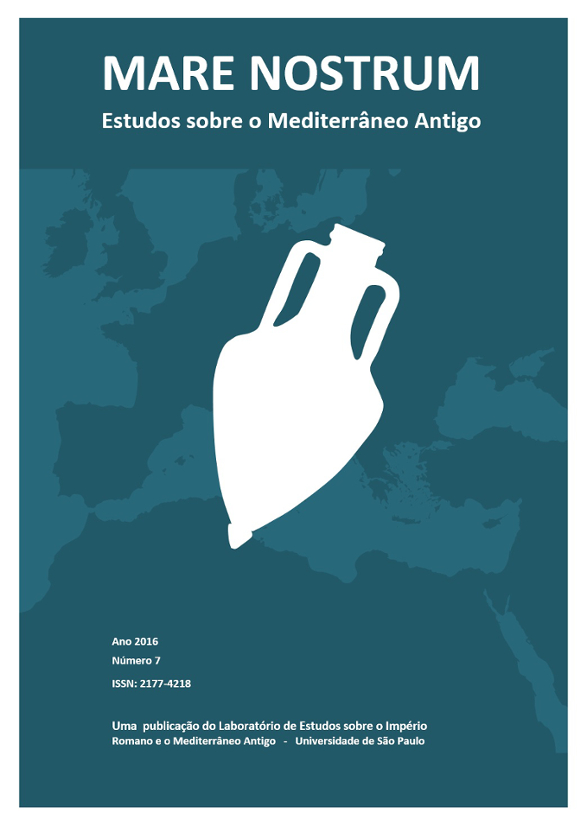Os coros musicais como lugar antropológico na sociedade ateniense no final do Séc. VI a.c. através da análise imagética de cerâmicas áticas
DOI:
https://doi.org/10.11606/issn.2177-4218.v7i7p99-119Palavras-chave:
coro, performance, cerâmica, isonomia, século VI a.C.Resumo
Através de uma abordagem da antropologia social, baseada no conceito de lugar antropológico de Marc Augé, este artigo pretende estabelecer uma breve análise de como os coros musicais se relacionam com a ideia de cidadania ateniense que se construiu a partir da tirania até as reformas de Clístenes. Esse contexto histórico caracteriza-se pela instauração da isonomia – governo baseado na igualdade dos cidadãos perante a lei (nómos) – e tem como algumas de suas características principais a participação popular na boulé, nos festivais cívicos e na falange hoplita. A função dos coros musicais como componente de formação da cidadania ateniense teria se dado a partir de sua relação com a falange hoplita e de sua presença nos grandes festivais cívicos que ocorriam desde o período da tirania (560-510 a.C.). Encontramos evidências dessas relações na documentação imagética das cerâmicas áticas, exemplificadas neste artigo pelo skýphos de autoria de HeronDownloads
Os dados de download ainda não estão disponíveis.
Downloads
Publicado
2017-03-27
Edição
Seção
Artigos
Licença
Os conteúdos expressos nos textos publicados pela Mare Nostrum são de exclusiva responsabilidade de seus respectivos autores.
A reprodução dos textos editados pela Mare Nostrum é permitida sob licença Creative Commons, Atribuição-NãoComercial (CC BY-NC).
Autores que publicam nesta revista concordam com os seguintes termos:
- Autores mantém os direitos autorais e concedem à revista o direito de primeira publicação, com o trabalho simultaneamente licenciado sob a Licença Creative Commons Attribution que permite o compartilhamento do trabalho com reconhecimento da autoria e publicação inicial nesta revista.
- Autores têm autorização para assumir contratos adicionais separadamente, para distribuição não-exclusiva da versão do trabalho publicada nesta revista (ex.: publicar em repositório institucional ou como capítulo de livro), com reconhecimento de autoria e publicação inicial nesta revista.
- Autores têm permissão e são estimulados a publicar e distribuir seu trabalho online (ex.: em repositórios institucionais ou na sua página pessoal) a qualquer ponto antes ou durante o processo editorial, já que isso pode gerar alterações produtivas, bem como aumentar o impacto e a citação do trabalho publicado (Veja O Efeito do Acesso Livre).
Como Citar
Os coros musicais como lugar antropológico na sociedade ateniense no final do Séc. VI a.c. através da análise imagética de cerâmicas áticas. (2017). Mare Nostrum, 7(7), 99-119. https://doi.org/10.11606/issn.2177-4218.v7i7p99-119









